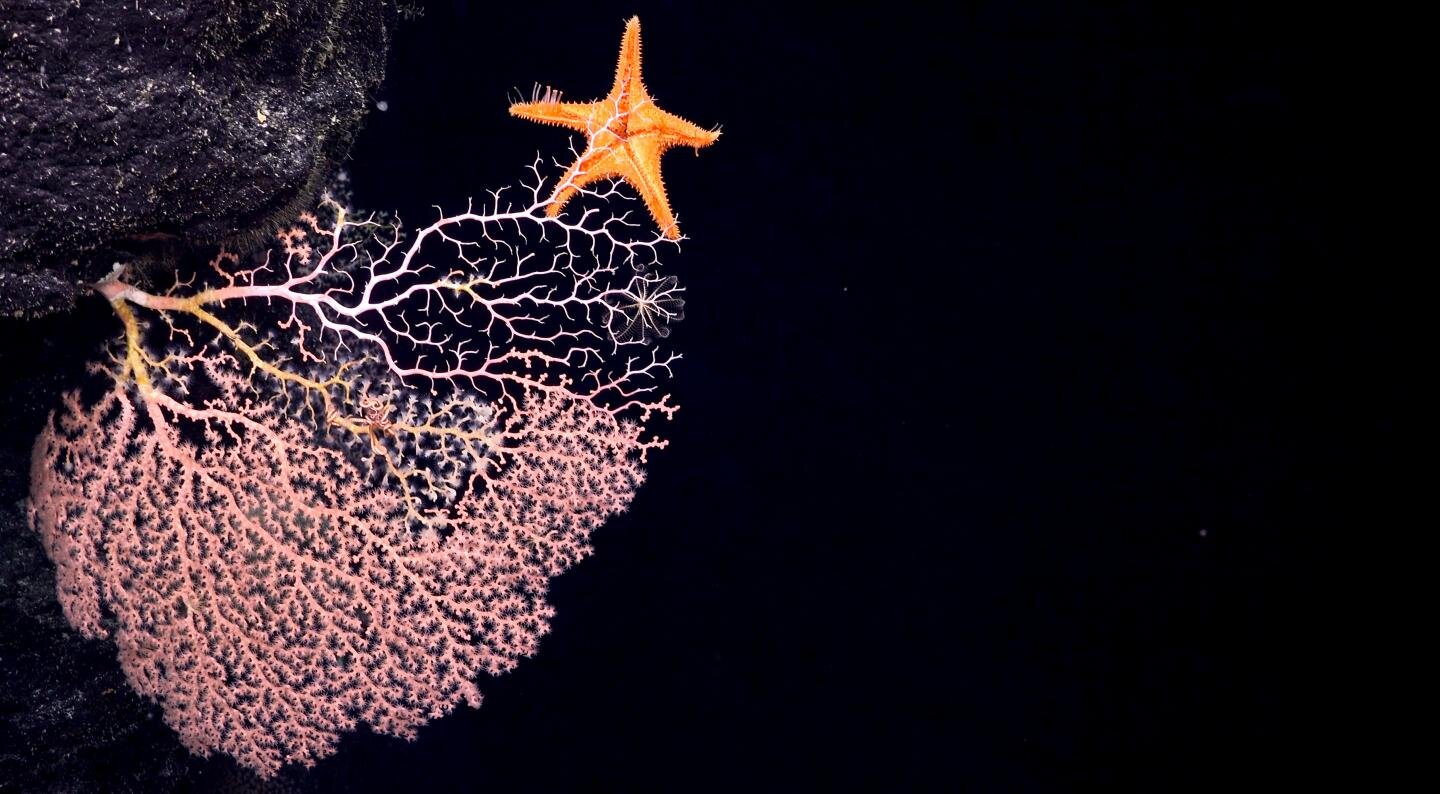#Scientists explore seamounts in Phoenix Islands Archipelago, gain insights into deep water diversity

“#Scientists explore seamounts in Phoenix Islands Archipelago, gain insights into deep water diversity”

Marine scientists aboard Schmidt Ocean Institute’s research vessel Falkor have identified likely new marine species and deep sea organisms on nine seamounts that were explored for the first time in the remote Phoenix Islands Archipelago. In a 34-day expedition that ended today, scientists also conducted high-resolution seafloor mapping of more than 30,000 square kilometers and video exploration of five additional seamounts.
“It has been very inspiring to help document the biodiversity of unexplored seamounts on the high seas and in U.S. waters,” said the expedition Chief Scientist Dr. Randi Rotjan of Boston University. “We’re at the beginning of the UN Decade of Ocean Science for Sustainable Development, so now is the time to think about conservation broadly across all oceanscapes, and the maps, footage, and data we have collected will hopefully help to inform policy and management in decision making around new high seas protected areas.”
During the expedition, scientists made two rare sightings of a glass octopus, a nearly transparent species whose only visible features are its optic nerve, eyeballs, and digestive tract. Before this expedition, there has been limited live footage of the glass octopus, forcing scientists to learn about the animal by studying specimens found in the gut contents of predators.
Schmidt Ocean Institute’s underwater robot SuBastian also captured footage for the first time of a rare whale shark, a deep water species that dates back millions of years and whose name comes from its length of more than 40 feet. During the expedition, scientists also noted unique marine behaviors, including crab stealing fish from one another.
Of the 21 expedition dives, totaling more than 182 hours of exploration on the seafloor with SuBastian, seven were completed in the U.S. Pacific Remote Islands Marine National Monument (PRIMNM) and offered new insights into the no-take marine protected area, which includes the U.S. exclusive economic zone (EEZ) around the Howland and Baker islands. In 2017, Falkor traveled to the Phoenix Islands Protected Area (PIPA) with some of the same scientists. The recently concluded expedition continued the 2017 work in the U.S. portions of the Phoenix Islands Archipelago, offering a more complete picture of the region’s entire ecosystem and how the seamount habitats are connected.
The science team completed the first comprehensive survey of coral and sponge predation in the world, to investigate how corals respond to grazing scars and wounding. The team conducted a series of novel experiments onboard the ship to determine how corals and sponge immune systems react to over 15 different microbial stimuli. Through this work, the team generated the largest deep-water microbial culture collection from the Central Pacific ocean.
Findings from these experiments will help to define the origins of adaptive immunity in multicellular animals, which may provide new insights and technologies that can help propel modern medical research in cancer immunotherapies, drug delivery and improved vaccine efficacy.
“The Ocean holds wonders and promises we haven’t even imagined, much less discovered,” said Wendy Schmidt, co-founder of Schmidt Ocean Institute. “Expeditions like these teach us why , we need to increase our efforts to restore and better understand marine ecosystems everywhere—because the great chain of life that begins in the ocean is critical for human health and wellbeing.”
“The coverage of this expedition was remarkable—we found changes in species across depth and geography around the Pacific equator and in the suite of organisms living on corals,” said Dr. Tim Shank, biologist at the Woods HoIe Oceanographic Institution. “Looking into these deep-sea communities has altered the way we think about how organisms live and interact on seamounts and how they maintain diversity of life in the deep ocean.”
“Working with scientists and local researchers, this expedition is a remarkable example of the frontiers of science and exploration that we are able to support,” said Dr. Jyotika Virmani, executive director of Schmidt Ocean Institute. “Live-streaming the dives gives us a glimpse of rarely seen and fascinating creatures such as the transparent glass octopus. By providing this platform to further the understanding of our ocean, we trigger the imagination while helping to push forward scientific insights and the protection of our underwater world.”
First completely remote at-sea science expedition in Australia’s coral sea marine park
Provided by
Schmidt Ocean Institute
Citation:
Scientists explore seamounts in Phoenix Islands Archipelago, gain insights into deep water diversity (2021, July 9)
retrieved 10 July 2021
from https://phys.org/news/2021-07-scientists-explore-seamounts-phoenix-islands.html
This document is subject to copyright. Apart from any fair dealing for the purpose of private study or research, no
part may be reproduced without the written permission. The content is provided for information purposes only.
If you liked the article, do not forget to share it with your friends. Follow us on Google News too, click on the star and choose us from your favorites.
For forums sites go to Forum.BuradaBiliyorum.Com
If you want to read more Like this articles, you can visit our Science category.




